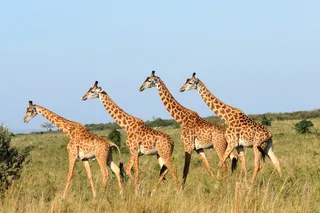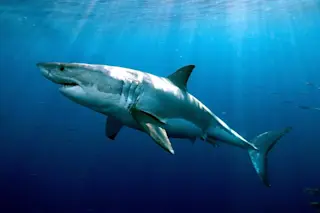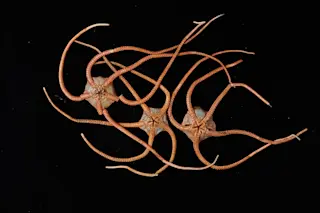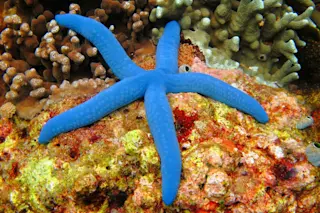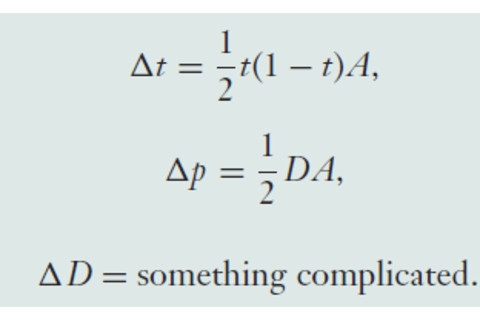
Frank analytic clarity? Sexual selection is a big deal. A few years ago Geoffrey Miller wrote The Mating Mind: How Sexual Choice Shaped the Evolution of Human Nature, which seemed to herald a renaissance of the public awareness of this evolutionary phenomenon, triggered in part by debates over Amotz Zahavi's Handicap Principle in the 1970s. Of course Charles Darwin discussed the process in the 19th century, and it has always been part of the arsenal of the evolutionary biologist (I first encountered it in Jared Diamond's The Third Chimpanzee, where he lent some credence to Darwin's supposition that human racial differences may be a consequence of sexual selection).
But this bump in recognition for sexual selection seems to be accompanied by its co-option as a deus ex machina for all sorts of unexplained events
. And yet as they say, that which explains everything explains nothing. To get a better sense of the current scientific literature I consulted A Guide to Sexual Selection Theory in the Annual Review of Ecology, Evolution, and Systematics. The image above is from an actual box in this review! Normally technical boxes illuminate with an air of superior authority (e.g. "it therefore follows from eq. 1.../"), but it seems to me that the admission that a parameter can be represented by the verbal assertion that it's complicated tells us something about the state of sexual selection theory. In short: its formal basis is baroque because the dynamic itself is not amenable to easy decomposition.
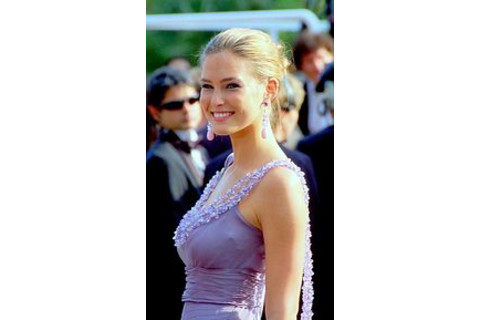
Not just for the peacocksCredit: George Biard First, for those who are unfamiliar with the topic, sexual selection theory comes in several flavors. As the term implies sexual selection emerges from differential fitness due to the preferences of individuals for various favored traits. I will admit beforehand that my personal preference is that sexual selection not be so artificially detached from natural selection more broadly, but the nature of the discussion is usually one where such strong distinctions are made. So I won't make too much of a fuss about that. Perhaps the most obvious area of difference is that there are forms of sexual selection where there is no strong exogenous fitness implication. By this, I mean that there is no great adaptive value to the trait being favored proportional to its selective value (note: the trait may not necessarily be totally neutral initially, one could imagine non-sexual preferences which triggered subsequent sexual dynamics). This is at the heart of Fisherian runaway process. The basic principle here is that if there is a correlation for a trait which is preferred, and the preference for that trait, then the two will amplify each other's fitness and rapidly sweep up in frequency within the population. A simple illustration will suffice. Imagine that within a bird population a subset of females prefers longer beaks. There is normal variation within the population for beak length, which implies that the fitness of the shorter and longer beaked individuals is not so different. If a subset of females prefers longer beaks, then males with longer beaks will have higher fitness, because they have reproductive access to all the females, while those with shorter beaks only have access to those females who do not exhibit a preference. In the next generation there will be a correlation between longer beaks (from the fathers) and preference for longer beaks (from the mothers). Because of the correlation there is now also selection for the preference as a byproduct of selection for the longer beaks! This means that selection for longer beaks is greater, and therefore selection for the preference is greater, and so forth.

Credit: Doug Janson. This dynamic is a byproduct of the structural factors inherent in sexual reproduction. In particular, dimorphism between the sexes, and the importance of selection in mate choice. Fisherian process is rapid, it is arbitrary, and, it is likely subject to oscillations as it is kept in check by other evolutionary forces. In the example above continuous selection for long beaks would obviously have some deleterious consequences as natural selection began to take its told. At that point no matter how "sexy" long beaked sons were, it would all be for naught if they couldn't even be viable. This sort of sexual selection predicts a constant bubble of diversity of morphology over space and time. Another sexual selection framework where fitness is a consequence of indirect forces is sensory bias. Again, an example will suffice. Imagine birds which are frugivores. In this situation there will be a natural preference for bright and vibrant colors, because those are the colors of the main food item, fruit. Females may naturally prefer individuals with the same vibrant colors as their primary food item (this may even be selectively beneficial, as it indicates strong preference of high quality food). As in the Fisherian process above obviously this can come at a cost. Bright fruit want to be eaten. Bright animals do not.
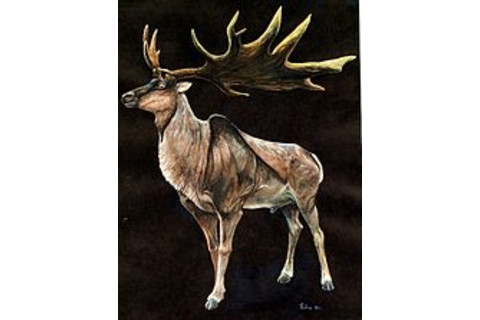
Credit: Pavel Riha This highlights again the fact that over and over sexually selected traits may not be beneficial in the conventionally adaptive sense. They may even be a detriment to fitness! And this is also an observation of the Handicap Principle, though it turns logic on its head at the end of the game. Its counter-intuitive thesis is that costly signals in fact indicate that an organism is extremely fit. The underlying reason is that costly signals are by their nature honest. Massive antlers for example take a great deal of biological energy in production and maintenance, and, they may also make one more vulnerable to predators. Only the most superior individuals could incur such costs! The relationship here to Thorstein Veblen's idea of "conspicuous consumption" is so obvious that I won't bother to elaborate on it. Crazy as it may sound, from what I can tell the Handicap Principle has now come to be accepted by many biologists (Richard Dawkins' for example has done an about face on the theory). The Handicap Principle is arguably a model of a "good genes" of sexual selection. Unlike Fisherian runaway or sensory bias the preference is rooted in the genuine fitness of the individual as evaluated by external metrics (at least in the indirect sense of genetic health). Theories of beauty in evolutionary psychology are often implicitly predicated on this model, where high symmetry and extreme secondary sexual characteristics suggest few deleterious mutations interfering with the idealized development of the individual. The explanations for why larger size in males and larger breasts and buttocks might signal fitness are also so obvious in comparison to something like Fisherian runaway that many people find direct benefit models also more plausible. That is, not only do these traits signal good genes, but they confer immediate benefits for survival and function. But plausibility does not lead us toward the truth in all cases. Sexual selection models explicated in verbal terms often tend toward circularity and confusion. A real thought experiment could run like so. You have a population where females prefer attractive males (e.g. they are more vibrant in their plumage). But the fitness of the females (in particular, the suvivorship of their offspring) is also depend upon mate provisioning of supplementary resources. One can easily imagine a scenario where promiscuous attractive males and monogamous less attractive males converge upon the same equilibrium fitness because of heterogeneity in female mate choice. Some females may opt for "cads," who stray and invest little in their offspring, even though those offspring are of high genetic quality. Other females may opt for "dads," males who have lower genetic quality, but remain more invested in their smaller number of offspring. These offspring may have higher survivorship because of the added investment. Verbal elaborations of sexual selection seem never to give a "final answer," because there is always "on the other hand." And this is why I wanted to review the available literature. Unfortunately I gained little extra clarity, as the formalism above implies. The authors suggest there are four primary avenues by which sexual selection is explored: population genetics, quantitative genetics, invasion approaches, individual-based simulations. I am not particularly familiar with 'invasion approaches,' though in its broad outlines it seems similar to the quantitative genetic method. The population genetic methods are powerful because they start from first principles and explicitly model parameters such as linkage. But there are limits to the analytic tractability of complex phenomena such as sexual selection in population genetic models, for example, multilocus approaches tend to be difficult. The quantitative genetic methods make the standard assumptions of normal distributions for straits, and are gene blind (they look at the phenotype). They seem a nice complement to the population genetic methods, and are often useful in more practical field research. Finally, the simulation approach suffers from the lack of computational power to explore the whole parameter space. In relation to the simulation approach, last year a phylogeneticist told me that 15 years ago researchers assumed they could never operationalize maximum likelihood models in their lifetimes. Of course today ML based packages are the 'fast' strategies in relation to the more heavy duty Bayesian frameworks in phylogenetics. I point this out because I have faith that simulation may be the ultimate way to go for understanding sexual selection over the long run, supplemented by the other methods as scaffolds to reduce the parameter space. We may not be able to explore the whole space of possibilities, but that is the nature of science. My primary concern for the formal models as outlined in the review is that many of them assumed weak selection. This is a feature of many population genetic models (e.g. see W. D. Hamilton's original work on inclusive fitness), but from the perspective of evolutionary genomics some of the most fascinating possibilities for sexual selection are subject to strong selection. For example, many researchers appeal to sexual selection to explain the pigmentation complex of European populations, but more and more evidence suggests that these loci have been subject to relatively strong selection. Is this plausible for sexual selection? Do we even know how strong sexual section might operate? Fisherian runaway is an obvious candidate, but this process is so rapid, and so protean, that it seems unlikely. A major long term problem with sexual selection theories is that they seem to imply oscillatory dynamics when equilibria are more easy to digest (and traditionally many classical models are oriented toward solving for equilibria). This is why models of positive natural selection are so straightforward, they have a beginning and an end. This does not seem to be the case for more realistic sexual selection models. Rather than a specific answer to a given biological question sexual selection theory may be more useful as a way to explain the constant background flux of evolutionary process. At this point I am not convinced that it is robust enough to give us good "rough and ready" rules of thumb which we can apply as a sieve upon the welter of evolutionary genomic results. But progress is being made, and in concert with fields like game theory and computer science I suspect that the future is going to be bright.



